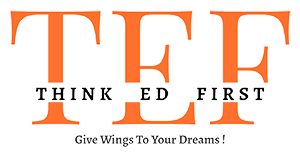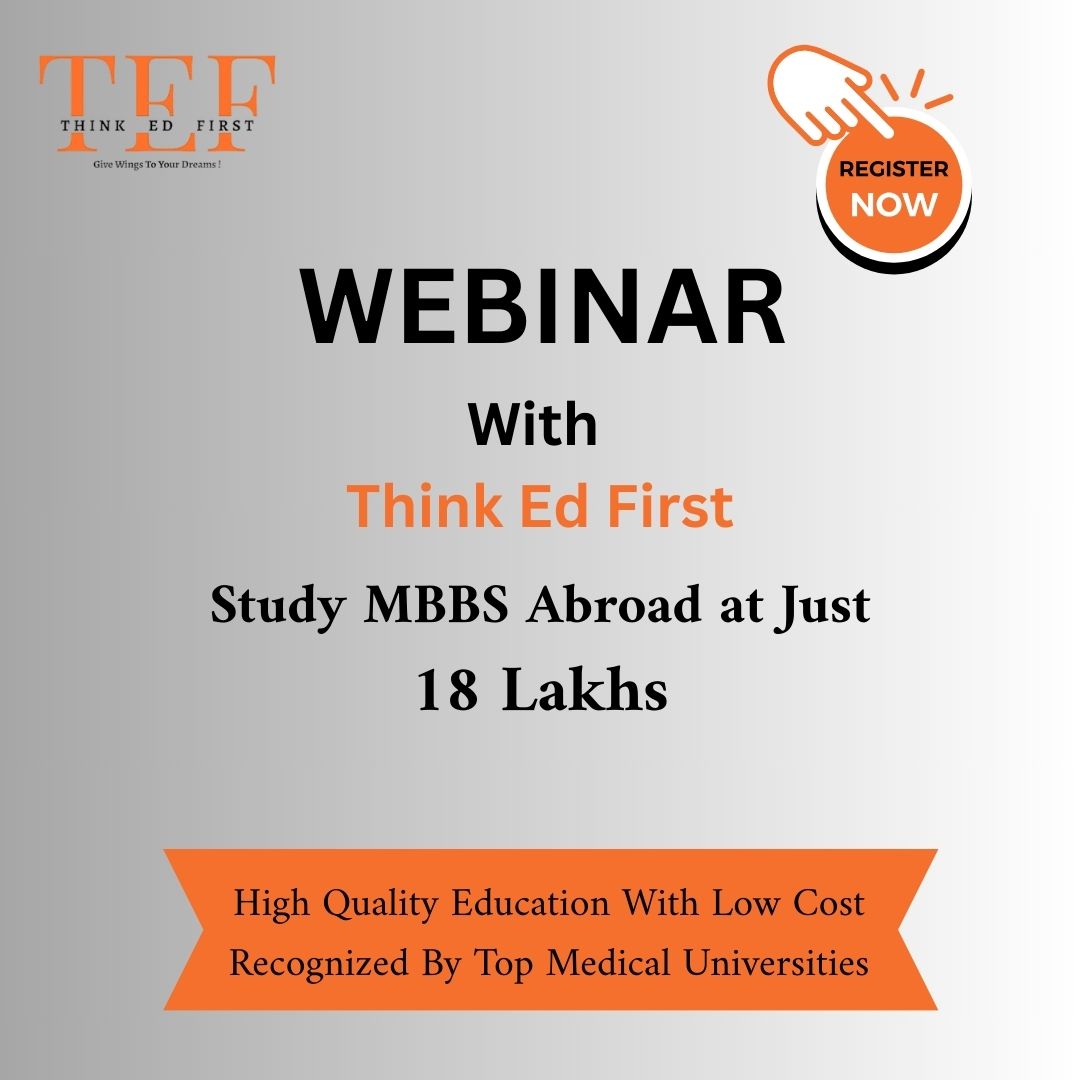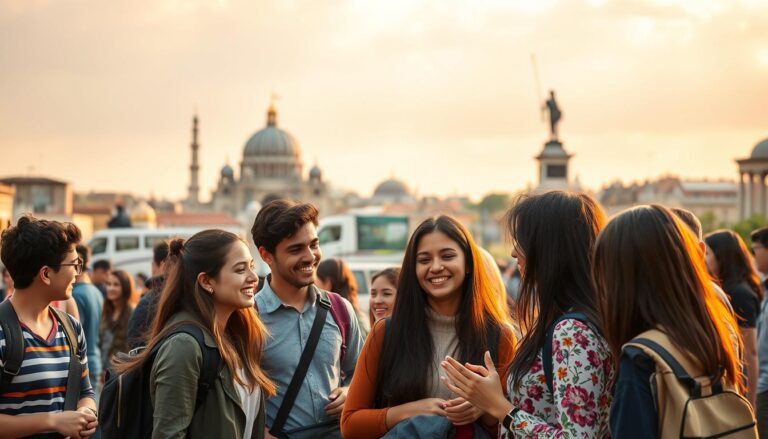Have you ever wondered how much a medical degree from abroad can impact your career prospects at home? With the increasing number of Indian students choosing to study medicine overseas, it’s essential to understand the future opportunities that await them.
Over the years, many aspiring doctors have turned to international universities for their education. Among these, Russian medical institutions have gained significant recognition. These universities are known for their quality education and global accreditation, making them a popular choice.
In this article, we explore the potential earnings for graduates who complete their studies in Russia and return to India. We’ll also discuss the factors influencing these salary trends and what the future holds for these professionals. Stay tuned to uncover the details that could shape your medical career.
Introduction
Exploring international education options has become a growing trend among Indian students. Many are drawn to the idea of pursuing their studies abroad, especially in fields like medicine. This shift is driven by the desire for quality education and better career opportunities.
One of the key reasons students choose to study overseas is affordability. Compared to private institutions at home, international universities often offer lower tuition fees. Additionally, these programs are globally recognized, ensuring that graduates are well-prepared for their careers.
For Indian students, this path is particularly appealing due to the intense competition in local entrance exams. By opting for courses abroad, they can access quality education without the pressure of limited seats. This has led to a steady increase in the number of students enrolling in international programs.
In the following sections, we’ll delve deeper into the benefits of studying abroad, the structure of these courses, and what students can expect. Whether you’re considering this path or simply curious, this guide will provide valuable insights.
Overview of MBBS in Russia for Indian Students
Studying medicine abroad offers a unique blend of global exposure and quality education. For Indian students, Russian universities have become a top choice due to their structured programs and international recognition. The MBBS course in Russia typically spans six years, combining theoretical knowledge with practical clinical training.
State medical universities in Russia play a pivotal role in shaping the careers of aspiring doctors. These institutions are accredited by global bodies like the Medical Council of India (MCI) and the World Health Organization (WHO). This ensures that graduates are well-prepared to practice medicine both in India and abroad.
The curriculum is designed to provide a comprehensive learning experience. Students begin with foundational subjects in the early years, gradually moving to advanced clinical rotations. This approach ensures a strong grasp of both theory and practice, making graduates highly competent.
For international students, especially those from India, the environment is welcoming and supportive. The smaller class sizes, typically 15-20 students, allow for personalized attention. This is a significant advantage compared to the larger classes in Indian institutions.
Here’s a quick comparison of tuition fees at some prominent Russian universities:
| University | Annual Tuition Fees (INR) |
|---|---|
| Kazan Federal University | 6.27 lakhs |
| Volgograd State Medical University | 6.03 lakhs |
| Russian Peoples Friendship University | 7.86 lakhs |
| Kuban State Medical University | 2.88 lakhs |
For more details on the overview of MBBS in Russia, explore our comprehensive guide. This pathway not only offers quality education but also opens doors to global career opportunities.
Benefits of Pursuing MBBS in Russia
Affordable education with global recognition is a dream for many aspiring doctors. For Indian students, Russian medical universities offer a cost-effective pathway to achieve this goal. The tuition fee here is significantly lower compared to many other countries, making it an attractive option.
One of the standout advantages is the globally recognized state medical degrees. These programs are accredited by international bodies like WHO and MCI, ensuring graduates can practice medicine worldwide. This recognition adds immense value to your degree and career prospects.
Russian universities are equipped with high-quality infrastructure and modern facilities. From advanced laboratories to well-stocked libraries, students have access to everything they need for a comprehensive learning experience. This ensures a strong foundation in both theory and practice.
Another key benefit is the smaller class sizes, typically ranging from 13 to 15 students. This allows for personalized attention and better interaction with professors. Such an environment fosters deeper understanding and skill development, which is crucial for medical professionals.
The fee structure is transparent and competitive, making it easier for students to plan their finances. With affordable tuition fees and low living costs, studying in Russia becomes a viable option for many. This combination of quality education and affordability is hard to match.
MBBS Russia salary in India 2025
Understanding the financial rewards of a medical degree earned abroad is crucial for aspiring doctors. For graduates returning to India, the average annual earnings are projected to range between ₹8,00,000 and ₹12,00,000 in 2025. This makes studying MBBS in Russia an attractive option for many students.
Salaries vary significantly based on specialization. For instance, general practitioners can expect to earn around ₹8,00,000 annually, while specialists in fields like dermatology and surgery may earn up to ₹15,00,000. These figures highlight the lucrative potential of a career in medicine.
Here’s a breakdown of average salaries by specialization:
- General Medicine: ₹8,00,000 – ₹10,00,000
- Dermatology: ₹10,00,000 – ₹12,00,000
- Surgery: ₹12,00,000 – ₹15,00,000
Studying MBBS in Russia is not only cost-effective but also offers a strong return on investment. With affordable tuition fees and low living costs, students can achieve their dreams without financial strain. For more details on affordable MBBS programs, explore our comprehensive guide.
Career prospects are another key consideration. Around 70% of graduates secure employment within the first year, with 50% opting for government hospitals and the rest choosing private practice or clinics. This makes a medical college degree from Russia a valuable asset for future success.
Factors Influencing Salary for Russian MBBS Graduates
What determines the earning potential of medical graduates from international universities? Several factors play a role in shaping their career trajectory and income levels. Let’s explore these elements in detail.
The reputation of the institution is a significant factor. Graduates from top-ranked federal universities often have an edge in the job market. Employers value the quality of education and training provided by these institutions, which can lead to higher starting salaries.
Clinical exposure during the program also impacts earnings. Students who gain hands-on experience in well-equipped hospitals and clinics are better prepared for real-world challenges. This practical training enhances their skills and makes them more attractive to employers.
Individual performance during internships and rotations is another key factor. Graduates who excel in their clinical work and demonstrate strong problem-solving abilities are more likely to secure higher-paying positions. Consistency and dedication during training can set them apart from their peers.
Economic conditions and regional demand for medical professionals also influence salaries. Graduates working in urban areas or specialized fields often earn more due to higher demand and cost of living. Here’s a quick overview of factors affecting earnings:
- University ranking and accreditation
- Quality and duration of clinical training
- Individual performance during internships
- Economic and regional demand for doctors
Comparing outcomes from different state medical universities can provide valuable insights. Graduates from institutions with strong global recognition and robust placement programs tend to have better career prospects. This highlights the importance of choosing the right university for your medical education.
Course Duration and Curriculum Structure
The journey to becoming a doctor involves a well-structured curriculum that balances theory and practice. The program spans six years, divided into two distinct phases. The first two years focus on building a strong theoretical foundation, while the remaining four emphasize clinical training.
Theoretical Studies and Core Subjects
During the initial years, students delve into core subjects essential for medical practice. These include anatomy, physiology, and biochemistry. These foundational courses provide the knowledge needed to understand the human body and its functions.
Laboratory training is also a critical component. Students gain hands-on experience with medical equipment and techniques. This ensures they are well-prepared for the practical challenges of their future careers.
Clinical Rotations and Hands-On Training
The latter part of the program integrates clinical rotations into the curriculum. Students work in hospitals and clinics, applying their theoretical knowledge in real-world settings. This hands-on experience is invaluable for developing diagnostic and treatment skills.
Rotations cover various medical specialties, from general medicine to surgery. This exposure helps students identify their areas of interest and build expertise. By the end of the program, graduates are confident and competent medical professionals.
For those considering affordable MBBS programs, this structured approach ensures a comprehensive education. It combines rigorous academic training with practical exposure, preparing students for successful careers in medicine.
Cost Breakdown for Studying MBBS in Russia
Breaking down the expenses of a medical degree abroad helps in better planning. For Indian students, understanding the total cost of studying at a medical university in Russia is essential. This includes tuition fees, administrative charges, and living expenses.
Tuition Fees and Administrative Charges
The tuition fees at a medical university in Russia vary depending on the institution and city. On average, the total cost for the six-year program ranges from ₹16,00,000 to ₹34,00,000. Here’s a detailed comparison of fees at some top universities:
| University | 1st Year Fees (INR) | 2nd-6th Year Fees (INR) | Total Course Fees (INR) |
|---|---|---|---|
| Omsk State Medical University | 3,87,345 | 2,88,224 | 18,28,520 |
| Crimea Federal University | 4,06,980 | 3,12,545 | 19,69,705 |
| Kazan State Medical University | 5,52,500 | 4,71,275 | 29,08,700 |
| Novosibirsk State University | 5,95,000 | 5,74,600 | 34,68,000 |
Administrative charges are also part of the initial costs. These typically range from USD 800 to USD 900, depending on the university.
Additional Expenses and Living Costs
Apart from tuition fees, students need to budget for living expenses. The average monthly cost of living in Russia is approximately ₹13,000 (USD 150). This includes accommodation, food, and transportation.
For Indian students, opting for an Indian mess facility can cost around ₹10,200 (USD 120) per month. Medical insurance is another essential expense, ensuring coverage during the stay.
Studying at a medical university in Russia is more affordable compared to private institutions in India. The lower tuition fees and living costs make it a viable option for many aspiring doctors.
Learning the Russian language can also help reduce daily expenses, as it enables better communication and access to local resources. This is particularly useful for russia indian students looking to manage their budgets effectively.
Admission Process and Eligibility Requirements
The path to becoming a doctor starts with understanding the admission process and eligibility requirements. For aspiring medical professionals, meeting these criteria is the first step toward a successful career. Let’s explore the key aspects of this journey.
Eligibility Criteria and NEET Requirements
To apply for medical programs, students must meet specific academic standards. A minimum of 50% in Physics, Chemistry, and Biology (PCB) in 12th grade is mandatory. Additionally, qualifying for the NEET exam is essential for Indian students seeking admission abroad.
NEET serves as a benchmark for assessing a student’s readiness for medical studies. It ensures that applicants have the foundational knowledge required for the rigorous curriculum. Meeting these criteria opens the door to a world of opportunities in the medical field.

Step-by-Step Application Process
The application process is straightforward but requires attention to detail. Here’s a step-by-step guide to help you navigate it smoothly:
- Research and select your preferred university.
- Submit the application form along with the required documents.
- Wait for the university to review your application and issue an invitation letter.
- Apply for a student visa once the invitation letter is received.
- Prepare for departure and ensure all travel arrangements are in place.
Required documents include academic transcripts, a valid passport, NEET scorecard, and medical certificates. Ensuring these are ready beforehand can save time and avoid delays.
Intakes typically occur in September and February, with distinct deadlines for each. Applying early increases your chances of securing a spot in your desired program. Following these steps ensures a smooth and hassle-free admission process.
Required Documents for MBBS Admission in Russia
Preparing the right documents is a crucial step for securing admission to a medical program abroad. Accurate and complete paperwork ensures a smooth application process and avoids unnecessary delays. Here’s a detailed guide to the essential documents you’ll need.
Academic certificates are the foundation of your application. You’ll need your 10th and 12th-grade mark sheets to prove your eligibility. These documents demonstrate your academic performance and readiness for medical studies.
Your NEET scorecard is another critical requirement. It serves as proof that you’ve met the necessary standards for medical education. Without it, your application may not be considered by most universities.
Identification proofs like a valid passport are mandatory. Ensure your passport has at least six months of validity from the date of application. This is essential for both the admission process and visa approval.
Medical certificates and biometric reports are additional requirements. These documents confirm your health status and ensure you meet the physical standards for medical studies. They are also crucial for visa processing.
Here’s a quick checklist of the documents you’ll need:
- 10th and 12th-grade mark sheets
- NEET scorecard
- Valid passport
- Medical certificates
- Biometric reports
Ensuring you have all these documents ready beforehand can save time and stress. Double-check each item for accuracy to avoid complications during the application process. This preparation is key to securing your spot in a medical program abroad.
Comparing MBBS in Russia vs. MBBS in India
Choosing the right educational path is a critical decision for aspiring medical professionals. We’ll compare key aspects of studying medicine in Russia and India to help you make an informed choice.
The duration of the program is one of the primary differences. In Russia, the course spans six years, including one year of internship. In India, the program lasts 5.5 years, with a similar internship period. This slight difference allows Russian students more time for hands-on training.
Another significant factor is the fee structure. In India, government colleges charge around ₹1 lakh annually, while private institutions can cost up to ₹28 lakhs per year. In contrast, Russian universities offer programs at an average cost of ₹2.4 to ₹5.1 lakhs annually, making it a more affordable option.
Class sizes also vary greatly. Russian institutions maintain smaller batches, with a student-teacher ratio of 7:1. This ensures personalized attention and better interaction with professors. In India, larger class sizes can make it challenging to receive individualized support.
The academic environment in Russian universities is modern and well-equipped. Students have access to advanced laboratories and libraries, enhancing their learning experience. Indian institutions, while reputable, often face resource constraints due to higher student numbers.
Language and cultural differences also play a role. In Russia, most programs are taught in English, but learning the local language can enrich the experience. In India, the medium of instruction is primarily English, with some regional variations.
Here’s a quick comparison of key aspects:
- Duration: 6 years (Russia) vs. 5.5 years (India)
- Fee Structure: ₹2.4-5.1 lakhs/year (Russia) vs. ₹1-28 lakhs/year (India)
- Class Size: Small batches (Russia) vs. Larger classes (India)
- Facilities: Modern infrastructure (Russia) vs. Resource constraints (India)
Both systems have their strengths, but Russian universities offer a cost-effective and globally recognized pathway for medical education. Understanding these differences can help you choose the best option for your career.
Top Medical Universities for MBBS in Russia
Selecting the right institution for medical studies can shape your entire career. For Indian students, choosing a university with global recognition and strong academic programs is crucial. Russian medical universities are renowned for their quality education and affordable fees, making them a top choice for aspiring doctors.
Ranked Institutions and Recognitions
Russian medical universities consistently rank high in global metrics. Institutions like Sechenov University and Lomonosov Moscow State University are recognized by the Medical Council of India (MCI) and the World Health Organization (WHO). These accreditations ensure that graduates are eligible to practice medicine worldwide.
Here’s a list of top-ranked universities:
- Sechenov University: Ranked 150 in QS World University Rankings 2024.
- Lomonosov Moscow State University: Ranked 201-250 in QS World University Rankings 2024.
- Pirogov Russian National Research Medical University: Ranked 301-350 in QS World University Rankings 2024.
Notable Programs and Specializations
These universities offer a wide range of programs and specializations. From general medicine to advanced fields like cardiology and neurology, students have diverse options to explore. The curriculum is designed to provide both theoretical knowledge and hands-on clinical training.
Key programs include:
- General Medicine: A six-year program with a focus on foundational and clinical skills.
- Specializations: Advanced training in fields like surgery, dermatology, and pediatrics.
- Research Opportunities: Access to modern laboratories and research facilities.
For Indian students, these universities offer a pathway to a globally recognized degree. With affordable tuition fees and a supportive environment, they are an excellent choice for pursuing medical education. Understanding the rankings and programs can help you make an informed decision for your future.
Scholarships and Financial Assistance for MBBS
Financial support can make a significant difference for students pursuing their dreams abroad. For those studying at a russian university, scholarships and aid programs are available to ease the financial burden. These opportunities help cover tuition fees, cost living, and other expenses, making education more accessible.
Various scholarship schemes are offered by the Russian government and individual institutions. These programs aim to support international students, including those from India. Eligibility criteria often include academic excellence, financial need, and specific application requirements.
Examples of scholarship coverage include tuition fee waivers and monthly stipends. Some programs also provide additional benefits like accommodation or travel allowances. These options can significantly reduce the overall expenses for students.
Application deadlines and required documentation vary by program. It’s essential to research and prepare well in advance. Gathering all necessary documents, such as academic transcripts and recommendation letters, ensures a smooth application process.
Here are some key points to consider when applying for financial assistance:
- Check eligibility criteria for each scholarship program.
- Prepare all required documents, including proof of academic performance.
- Submit applications before the specified deadlines.
- Explore multiple options to maximize financial support.
Researching available scholarships is crucial for easing financial burdens. By taking advantage of these opportunities, students can focus on their studies without worrying about expenses. Financial aid programs make pursuing a medical degree at a russian university a viable and rewarding option.
Internship and Clinical Experience in Russia
Clinical rotations bridge the gap between theory and real-world practice. For medical students, internships are a critical part of their education. They provide hands-on experience in hospitals and clinics, preparing students for future challenges.
In the 6-year program, internships are integrated into the final years. This phase allows students to apply their knowledge in real medical settings. The duration of these rotations typically ranges from six months to one year, depending on the university and specialty.
High-quality clinical facilities and mentorship are key features of these programs. Students work under the guidance of experienced professionals, gaining valuable insights. This exposure enhances their diagnostic and treatment skills, making them well-rounded doctors.
Accommodation during internships is often arranged by universities. This ensures students can focus on their training without worrying about housing. Many institutions provide on-campus or nearby housing options, making the transition seamless.
The overall structure of the course supports skill development in real medical environments. From general medicine to specialized fields, students gain diverse experience. This comprehensive approach prepares them for both domestic and international career opportunities.
- Internships are mandatory and integrated into the 6-year program.
- Students gain hands-on experience in high-quality clinical facilities.
- Accommodation during rotations is often arranged by universities.
- The course structure emphasizes practical skill development.
By combining theoretical knowledge with practical training, these programs ensure graduates are ready to excel in their careers. The experience gained during internships is invaluable, shaping competent and confident medical professionals.
Cost of Living and Accommodation in Russia
Managing living costs while studying abroad is a key concern for many students. Understanding the expenses involved helps in planning a budget effectively. For those pursuing their studies in Russia, the cost of living is relatively affordable compared to other countries.
Accommodation is one of the major expenses. On-campus hostels typically cost between ₹5,000 to ₹8,000 per month. Off-campus options, such as private apartments, range from ₹20,000 to ₹40,000 monthly. Choosing the right option depends on personal preferences and budget.
Food and groceries are another significant part of the monthly budget. On average, students spend ₹10,000 to ₹20,000 on meals. Cooking at home can help reduce these costs, while eating out may increase them.
Transportation is relatively affordable, with monthly passes costing around ₹2,000 to ₹2,500. Utilities, including electricity and internet, add another ₹7,000 to ₹10,000 per month. These figures can vary based on the city and lifestyle choices.
Here’s a breakdown of average monthly expenses:
- Accommodation: ₹5,000 – ₹40,000
- Food: ₹10,000 – ₹20,000
- Transportation: ₹2,000 – ₹2,500
- Utilities: ₹7,000 – ₹10,000
Living costs differ across cities. For example, Moscow is more expensive than smaller cities like Kazan or Novosibirsk. Planning ahead and choosing the right location can help manage expenses better.
Practical tips for budgeting include tracking monthly spending, cooking meals at home, and using public transportation. These strategies can make studying abroad more affordable and stress-free.
Future Career Opportunities After MBBS
The completion of a medical degree opens doors to a wide array of career possibilities. Graduates can choose from diverse paths, whether they wish to practice domestically or explore opportunities abroad. The skills and knowledge gained during their studies prepare them for various roles in healthcare, research, and administration.
Domestic Job Prospects
In the domestic market, graduates can find roles in both government and private sectors. Government hospitals often offer stable positions with competitive benefits. Private hospitals and clinics provide opportunities for higher earnings, especially in specialized fields.
Clinical experience plays a significant role in career growth. Graduates with hands-on training are better equipped to handle real-world challenges. Over time, they can advance to senior positions or pursue further specializations.
International Opportunities
For those looking beyond borders, global recognition of their degree is a key advantage. Graduates can pursue careers in countries like the USA, UK, Canada, and Australia. However, they must pass licensing exams such as USMLE or PLAB to practice in these regions.
Specialization is another option for career advancement. Fields like cardiology, surgery, and pediatrics are in high demand globally. Graduates can also explore roles in research, healthcare management, or academia.
Here are some examples of career trajectories:
- Working in government hospitals with a focus on public health.
- Establishing a private practice in specialized fields.
- Pursuing postgraduate studies abroad for advanced qualifications.
- Engaging in research projects or healthcare startups.
The year of graduation and clinical experience significantly influence career growth. Graduates who invest time in building their skills and networks are more likely to succeed. Whether they choose to stay in their home country or explore international options, the future is full of potential.
Conclusion
Choosing the right path for medical education involves weighing both financial and career benefits. Studying abroad offers affordable tuition, structured clinical exposure, and global recognition, making it a compelling option for aspiring doctors. The detailed cost analysis shows that while expenses exist, the overall investment is highly competitive.
Living costs and scholarship opportunities further enhance affordability, ensuring students can focus on their studies without financial strain. By balancing these factors, graduates gain a strong foundation for a successful career in medicine.
We encourage prospective students to consider both the financial and professional advantages of this pathway. With promising future opportunities, this course opens doors to a rewarding and impactful career in healthcare.





